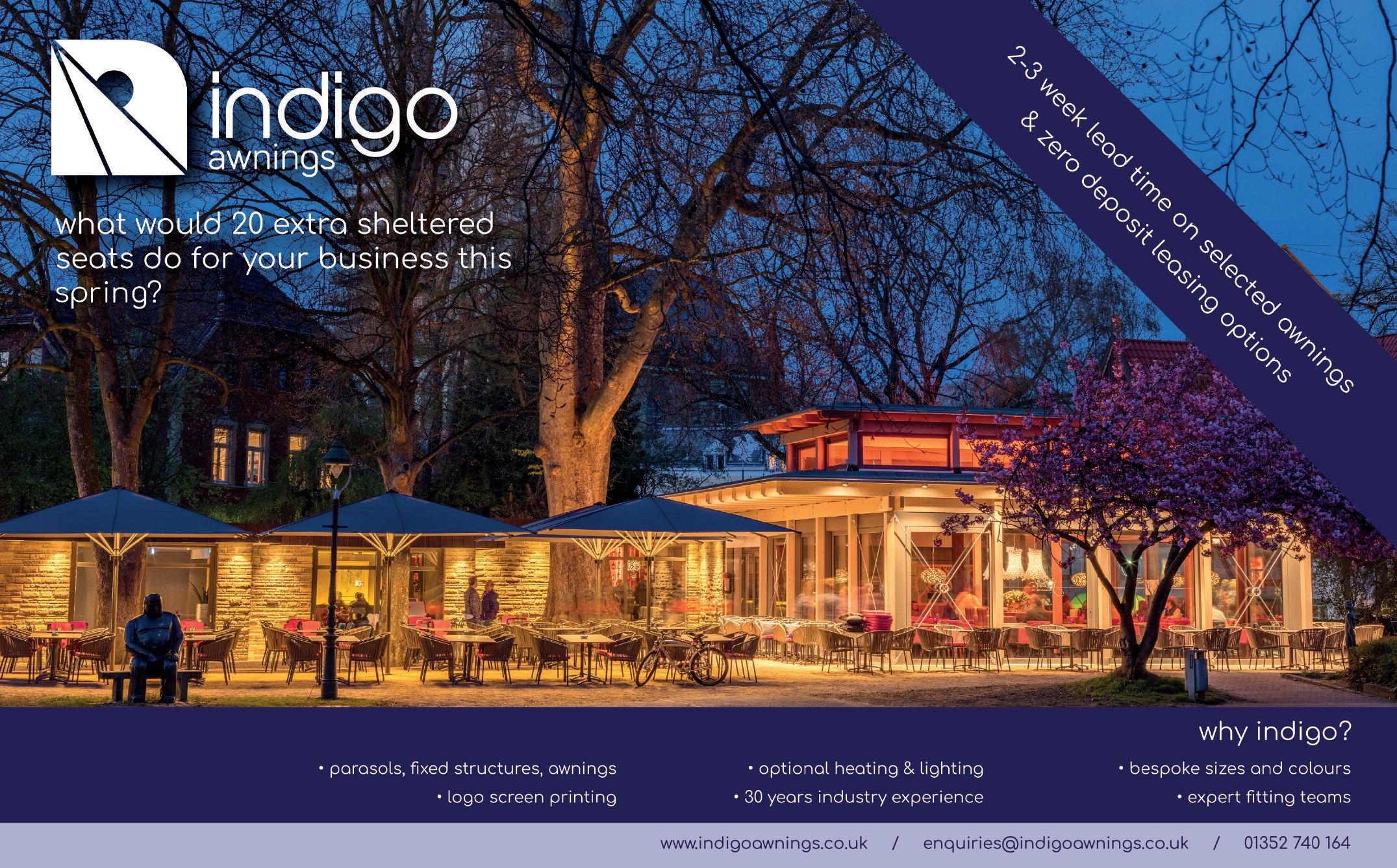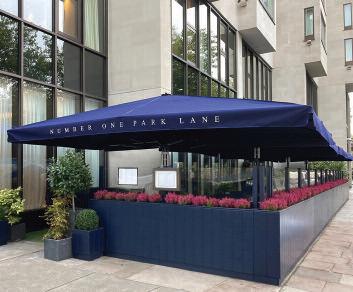
3 minute read
Outdoor Spaces Utilising Outside Spaces to Benefit the Bottom Line
by CLH News
By Simon Atha, Director, Boyer (par t of Leader s Romans Group) - www boyerplanning co uk
The mainstream media presents a gloomy picture of consumers ’ spending power drawing conclusions about the ‘inevitable’ impact on hospitality industr y
But while some bars and restaurants have already suffered as a result of the cost of living crisis those that are strong innovative and resourceful can sur vive And as the weather warms and the evenings lengthen, there’s ever y reason to shake off the winter gloom
One of the ways in which this can be achieved is using existing outside spaces to create the facilities that ever yone looks forward to as the summer approaches Inviting alfresco hospitality, whether in the traditional café culture style or something more alternative presents numerous oppor tunities for diversification
And even when the summer disappoints, shelters, heaters and cosy blankets can still make the experience safe and enjoyable
It goes without saying that maximising your outdoor space means maximising your profits But it can also help attract passing trade , and options such as awnings can provide cost-effective adver tising for your events and suppliers

So its wor th considering what can and can’t be achieved within planning law In the most simple terms there are three categories of consent: no planning permission required; temporar y uses and structures that fall under the categor y of ‘permitted development and those which require full planning consent through the standard planning application process
Without planning consent, hospitality owners and managers may introduce a variety of temporar y and moveable structures to help diversify and extend their offer - such as moveable play equipment, tables and chairs, large parasols and patio heaters
Since Covid, permission has existed for ‘temporar y ’ structures (essential- ly, anything which can be moved if required), for a limited period of 28 days per year This may sound restrictive but 28 days is ever y Saturday for half a year, or ever y Saturday and Sunday in June , July and August This use would cover the use of a marquee , pagoda or jumbrella
Then there’s Class BB which allows for 120 days’ use of temporar y structures, following prior approval by the local planning authority This allows for any of those features listed above to be used outside on a daily basis over the summer
The prior approvals process is not complicated or time-consuming In ver y simple terms, the legislation requires that the structures do not exceed 3 metres in height or occupy more than 50% of the footprint of the building, or 50 square metres
Change of use planning consent which falls under Permitted Development Rights frequently covers other changes that might be necessar y to host al fresco dining For example , louvred roof systems offer a new and unique way to expand and improve outdoor areas: with motorised blades that can rotate up to 135°, they can open up to allow a directed yet natural airflow, while also providing shade by responding to the sun ’ s position They can also be shut if needed, providing a water tight seal to prevent the tables and chairs becoming wet
Permanent awnings, outdoor rooms and pods fall under this
"Can We Sit Outside Please?"
Over 79% of UK diners have attested that they would spend more time and money in a restaurant if they incorporated outdoor dining
Integrating outdoor dining into your establishment is a no brainer decision especially when you consider the al fresco movement across the UK and return on investment oppor tunities For example , when discussing predictions for the rise in al fresco dining in 2022 Janice H Dobson Business Development Director at Archatrak said: “Restaurant owners can look at it mathematically, they know the value of ever categor y Similarly, these provide a great oppor tunity for diversification and all year-round protection from sun wind and rain You might also want to consider louvered bioclimactic pods Similar to louvred roof systems, these are retractable fabric roofs with aluminium blades which twist when operated to be opened, and let light and air in and out or closed to form a ceiling In some cases extensions, conser vatories and the creation of rooftop terraces can be achieved through permitted development rights but it is impor tant to seek advice on this as whether permitted development rights or full planning permission is required will impact on timing
To ser ve the extra footfall additional parking might be provided on adjoining land Under the principles of ‘temporar y ’ use , this is allowed for up to 28 days without planning consent; for more than 28 days, change of use consent it required
For bars which don’t provide food but may want to extend their offer or even host a food festival, there’s the oppor tunity for street food vans This doesn t require planning consent specifically, though licensing for food safety may be required
The industr y calculates that even a ver y simple outdoor space can increase revenue by up to 30% - in most circumstances as ver y little cost









